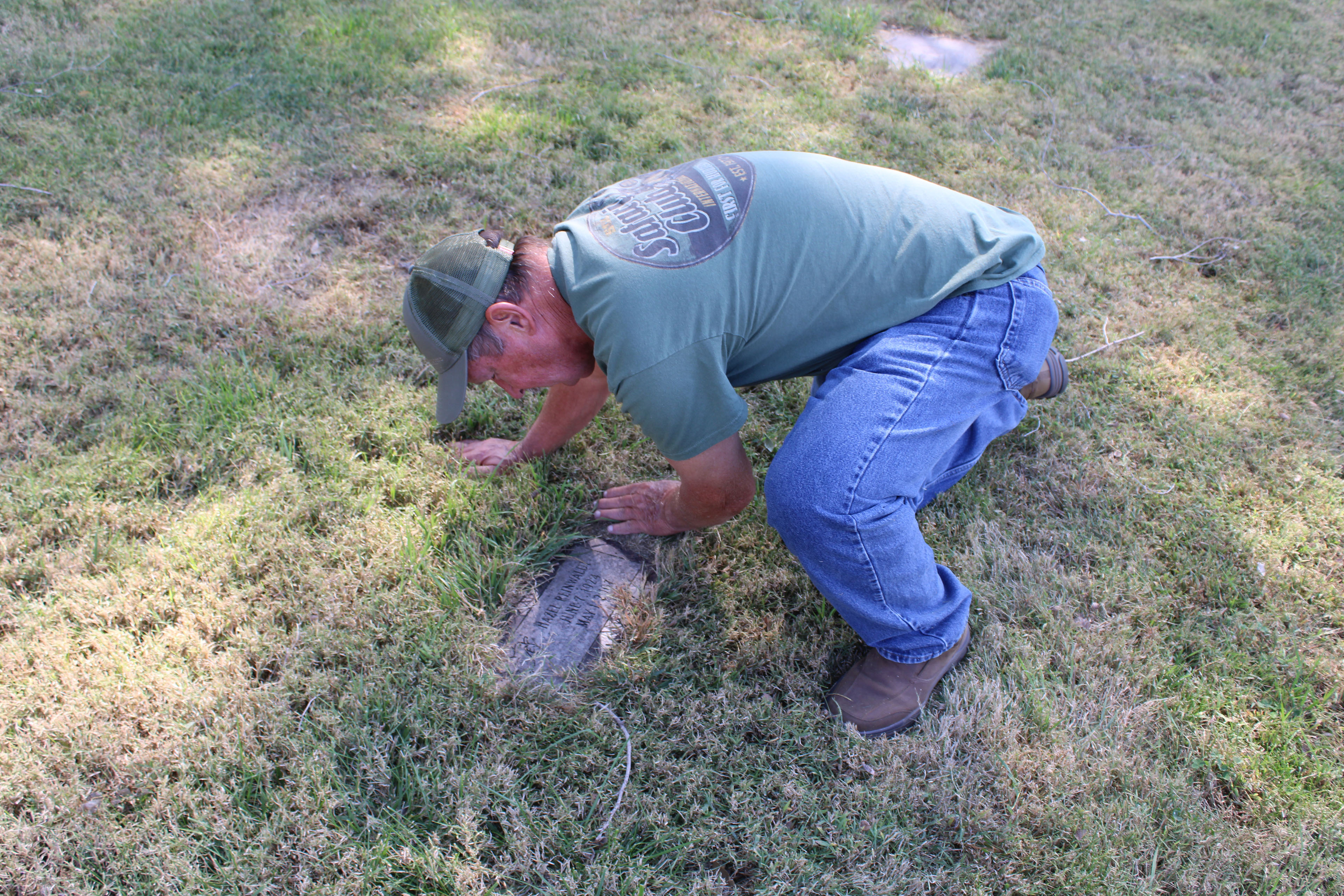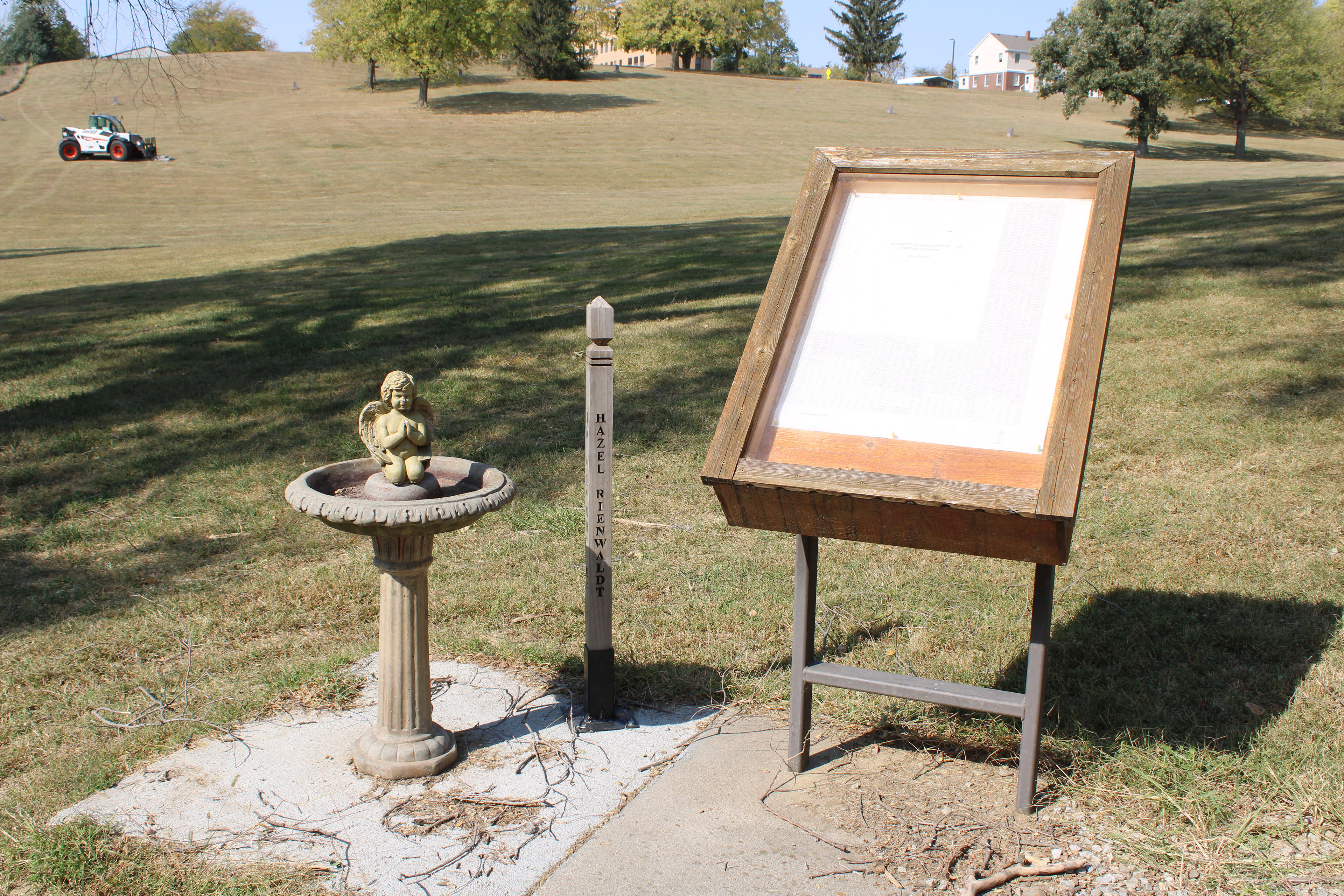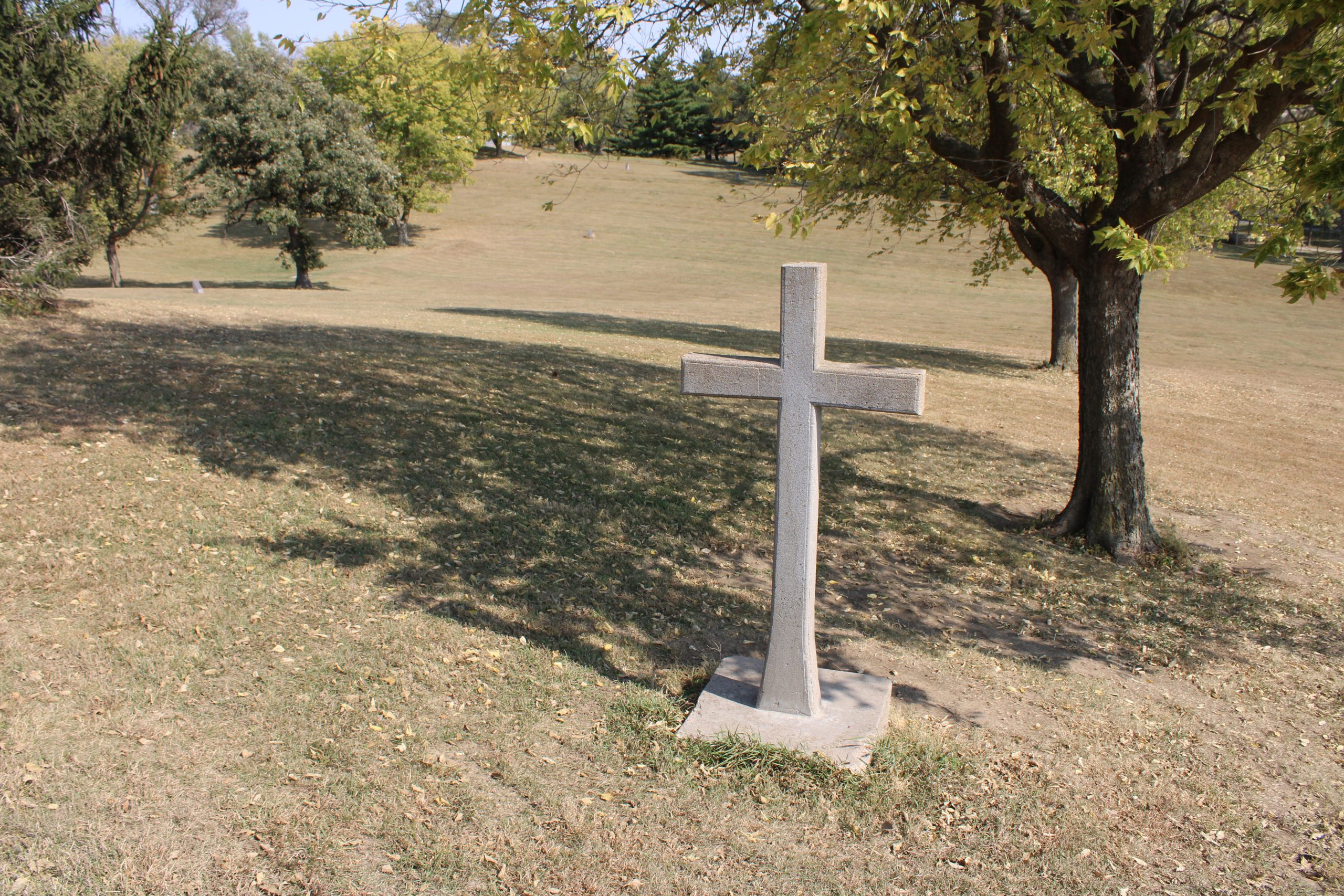GLENWOOD, Iowa — Hundreds of people who were separated from society because they had disabilities are buried in a nondescript field at the former state institution here.
Disability rights advocates hope Iowa will honor them by preventing the kind of neglect that has plagued similar cemeteries at other shuttered facilities around the U.S.
The southwest Iowa institution, called the Glenwood Resource Center, was closed this summer in the wake of allegations of poor care. The last of its living residents were moved elsewhere in June. But the remains of about 1,300 people will stay where they were buried on the grounds.
The graveyard, which dates to the 1800s, covers several acres of sloping ground near the campus’s brick buildings. A 6-foot-tall, weathered-concrete cross stands on the hillside, providing the most visible clue to the field’s purpose.
On a recent afternoon, dried grass clippings obscured row after row of small stone grave markers set flat in the ground. Most of the stones are engraved with only a first initial, a last name, and a number.
“If somebody who’s never been to Glenwood drove by, they wouldn’t even know there was a cemetery there,” said Brady Werger, a former resident of the facility.


During more than a century of operation, the institution housed thousands of people with intellectual disabilities. Its population declined as society turned away from the practice of sequestering people with disabilities and mental illness in large facilities for decades at a time. The cemetery is filled with residents who died and weren’t returned to their hometowns for burial with their families.
State and local leaders are working out arrangements to maintain the cemetery and the rest of the 380-acre campus. Local officials, who are expected to take control of the grounds next June, say they’ll need extensive state support for upkeep and redevelopment, especially with the town of about 5,000 people reeling from the loss of jobs at the institution.
Hundreds of such places were constructed throughout the U.S. starting in the 1800s. Some, like the one in Glenwood, served people with disabilities, such as those caused by autism or seizure disorders. Others housed people with mental illness.
Most of the facilities were built in rural areas, which were seen as providing a wholesome environment.
States began shrinking or closing these institutions more than 50 years ago. The shifts were a response to complaints about people being removed from their communities and subjected to inhumane conditions, including the use of isolation and restraints. In the past decade, Iowa has closed two of its four mental hospitals and one of its two state institutions for people with intellectual disabilities.
After closures in some other states, institutions’ cemeteries were abandoned and became overgrown with weeds and brush. The neglect drew protests and sparked efforts to respectfully memorialize people who lived and died at the facilities.
“At some level, the restoration of institutions’ cemeteries is about the restoration of humanity,” said Pat Deegan, a Massachusetts mental health advocate who works on the issue nationally. Deegan, who was diagnosed with schizophrenia as a teenager, sees the neglected graveyards as symbolic of how people with disabilities or mental illness can feel as if their individual identities are buried beneath the labels of their conditions.
Deegan, 70, helped lead efforts to rehabilitate a pair of overgrown cemeteries at the Danvers State Hospital near Boston, which housed people with mental illness before it closed in 1992. More than 700 former residents were buried there, with many graves originally marked only with a number.
The Massachusetts hospital’s grounds were redeveloped into a condominium complex. The rehabilitated cemeteries now have individual gravestones and a large historical marker, explaining what the facility was and who lived there. The sign notes that some past methods of caring for psychiatric patients seem “barbarous” by today’s standards, but the text portrays the staff as well-meaning. It says the institution “attempted to alleviate the problems of many of its members with care and empathy that, although not always successful, was nobly attempted.”
Deegan has helped other groups across the country organize renovations of similar cemeteries. She urges communities to include former residents of the facilities in their efforts.
Iowa’s Glenwood Resource Center started as a home for orphans of Civil War soldiers. It grew into a large institution for people with disabilities, many of whom lived there for decades. Its population peaked at more than 1,900 in the 1950s, then dwindled to about 150 before state officials decided to close it.
Werger, 32, said some criticisms of the institution were valid, but he remains grateful for the support the staff gave him until he was stable enough to move into community housing in 2018. “They helped change my life incredibly,” he said. He thinks the state should have fixed problems at the facility instead of shutting it.
He said he hopes officials preserve historical parts of the campus, including stately brick buildings and the cemetery. He wishes the graves had more extensive headstones, with information about the residents buried there. He would also like to see signs installed explaining the place’s history.

Two former employees of the Glenwood facility recently raised concerns that some of the graves may be mismarked. But officials with the Iowa Department of Health and Human Services, which ran the institution, said they have extensive, accurate records and recently placed stones on three graves that were unmarked.
Department leaders declined to be interviewed about the cemetery’s future. Spokesperson Alex Murphy wrote in an email that while no decisions have been made about the campus, the agency “remains committed to ensuring the cemetery is protected and treated with dignity and respect for those who have been laid to rest there.”
Glenwood civic leaders have formed a nonprofit corporation that is negotiating with the state over development plans for the former institution. “We’re trying to make the best of a tough situation,” said Larry Winum, a local banker who serves on the new organization’s board.
Tentative plans include tearing down some of the existing buildings and creating up to 900 houses and apartments.
Winum said redevelopment should include some kind of memorial sign about the institution and the people buried in the cemetery. “It will be important to us that those folks be remembered,” he said.
Activists in other states said properly honoring such places takes sustained commitment and money.
Jennifer Walton helped lead efforts in the 1990s to properly mark graves and improve cemetery upkeep at state institutions in Minnesota.
Some of the cemeteries are deteriorating again, she said. Activists plan to ask Minnesota legislators to designate permanent funding to maintain them and to place explanatory markers at the sites.
“I think it’s important, because it’s a way to demonstrate that these spaces represent human beings who at the time were very much hidden away,” Walton said. “No human being should be pushed aside and ignored.”

On a recent day, just one of the Glenwood graves had flowers on it. Retired managers of the institution said few people visit the cemetery, but amateur genealogists sometimes show up after learning that a long-forgotten ancestor was institutionalized at Glenwood and buried there.
Former grounds supervisor Max Cupp said burials had become relatively rare over the years, with more families arranging to have deceased residents’ remains transported to their hometown cemeteries.
One of the last people buried in the Glenwood cemetery was Kenneth Rummells, who died in 2022 at age 71 after living many years at the institution and then at a nearby group home overseen by the state. His guardian was Kenny Jacobsen, a retired employee of the facility who had known him for decades.
Rummells couldn’t speak, but he could communicate by grunting, Jacobsen said. He enjoyed sitting outside. “He was kind of quiet, kind of a touch-me-not guy.”
Jacobsen helped arrange for a gravestone that is more detailed than most others in the cemetery. The marker includes Rummells’ full name, the dates of his birth and death, a drawing of a porch swing, and the inscription “Forever swinging in the breeze.”
Jacobsen hopes officials figure out how to maintain the cemetery. He would like to see a permanent sign erected, explaining who is buried there and how they came to live in Glenwood. “They were people too,” he said.



